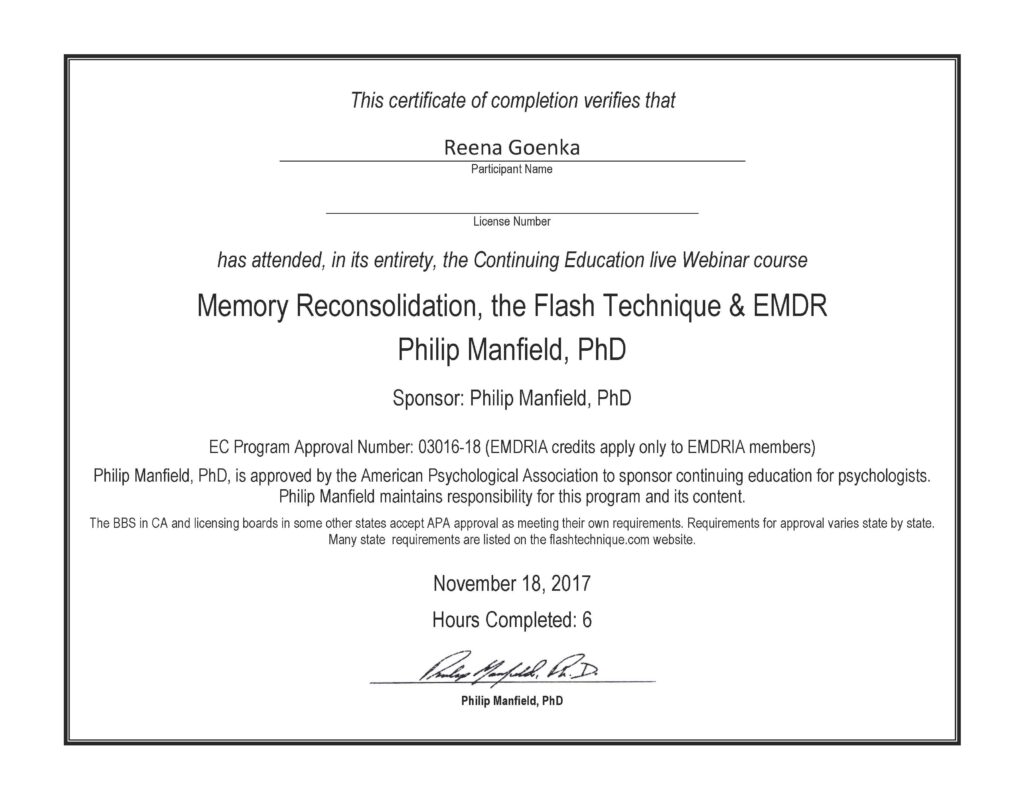Flash Technique Singapore
Home > Psychotherapies > Flash Technique
Flash Technique: Easing Emotional Intensity Without Reliving the Pain
Focusing on joy and positive experiences can be pivotal in healing from past trauma and anxiety.
Flash Technique In Singapore
Apprehensive about delving into the dark rooms of your troubling past?
It’s normal to feel apprehension and fear, and it’s not easy to delve into our past disturbing memories. However, what if you were told that you could heal from your past disturbing memories, trauma, and anxieties by not only not focusing on them but, in contrast, by concentrating on a feel-good engaging activity, relationship, or memory that will serve as a distraction?
In the moments that you focus on feel-good positive experiences, FT helps you make new adaptive memories in the present. Examples of positive experiences and memories can include talking about your pet, favourite hobby, cooking, hiking, parenting, etc. Introducing FT, a groundbreaking and evidence-based therapeutic approach on the rise.


The Flash Technique (FT) is a therapeutic approach developed by Phil Manfield, to rapidly reduce the intensity of a disturbing memory or image. FT emerges as a novel, evidence-based therapeutic approach aimed at alleviating the distress linked with traumatic or distressing memories. Distinguishing itself from traditional trauma therapy methods, FT offers a minimally intrusive alternative that doesn’t necessitate conscious engagement with the traumatic memory. This unique characteristic enables clients to process such memories without experiencing heightened distress. Acting as a complement to the EMDR preparation phase or any exposure-based treatment, FT facilitates the processing of memories that would otherwise be intolerable or overwhelming for the client.
FT offers a promising alternative by sidestepping the need for clients to confront their trauma memories directly. Moreover, it eliminates the lengthy process of titration and processing weaker versions of traumatic memories to enhance tolerability. This efficiency makes FT particularly appealing.
The Flash Technique is in its early stages, and there is speculation regarding its potential mechanisms for the observed rapid effects. Manfield (2017) proposed that FT could resemble subliminal messaging, where the client accesses the memory so fleetingly that they are not consciously aware of its details for processing.
Focusing on a positive experience is all FT clients need to do once they have identified the memory to be processed. Instead of recalling the memory consciously, clients blink their eyes three times when prompted. The intentional eye-blinking utilized in the Flash Technique (FT) could offer momentary access to the traumatic memory for processing, akin to subliminal messaging. It may stimulate and engage the amygdala and hippocampus, facilitating brief access to the traumatic memory. With this short access window, the amygdala has limited time to become excessively activated. Consequently, the client can maintain a state of calmness while recalling the traumatic memory, creating the prediction error crucial for potential memory reconsolidation. This cycle is iterated during blinking in FT, enabling memory reconsolidation to advance.
Flash Technique can be beneficial in various situations, including:
– Trauma and PTSD: FT can help individuals who have undergone a traumatic event or are suffering from post-traumatic stress disorder (PTSD) by providing a less distressing way to address traumatic memories and heal from them.
– Reliving Memories in the Present: Any memory that serves as a disturbance in the present, as if you are reliving it in the present, is an excellent target to heal with FT.
– Anxiety Disorders: It may be helpful for individuals with anxiety disorders, such as social anxiety, specific phobias, or generalized anxiety disorder, by offering a method to reduce anxiety triggers without requiring direct confrontation.
– Fearful Memories: Flash Therapy can assist those dealing with fearful memories, sensations or distressing thoughts by reducing the emotional intensity associated with these memories.
– Phobias: Treating phobias with the Flash Technique (FT) has shown promise in clinical practice. By leveraging the principles of rapid exposure and desensitization, FT aims to alleviate the emotional distress associated with phobic stimuli swiftly. Unlike traditional exposure therapy, which often involves prolonged and direct confrontation with the feared object or situation, FT utilizes brief access to the phobic memory, allowing for rapid processing and reconsolidation. This approach enables clients to experience significant reductions in phobic responses without the need for extensive exposure sessions. FT’s efficiency and tolerability make it an attractive option for individuals seeking a faster and less distressing way to overcome their phobias. As research continues to accumulate, FT is increasingly recognized as an evidence-based intervention for phobia treatment, offering hope for those struggling with debilitating fears.
– Treatment Avoidance: For individuals who are hesitant to engage in traditional exposure therapies due to fear of reliving traumatic experiences or discomfort, Flash Therapy can offer a less intimidating alternative.
– Efficiency in Therapy: Flash Therapy’s streamlined approach, which eliminates the need for lengthy titration and processing of traumatic memories, may be constructive for those seeking efficient therapeutic interventions.
The growing number of research papers on the Flash Technique (FT) contributes to its evidence-based status. We are listing links to some interesting research done. For all the research done on FT so far, please visit flashtechnique.com

To ensure Flash Technique is beneficial in the above and many other scenarios, it’s always recommended to consult a qualified trauma specialist with training in The Flash Technique.
At Insightful, our trauma specialist, Reena Goenka trained in advance Flash Techniques can integrate the same with other therapies (if needed) to enhance therapeutic outcomes. Here’s how insightful counseling can support FT when administered by a specialist like Reena Goenka
– Building Rapport and Trust: Reena Goenka’s skills can help establish a strong therapeutic alliance with clients undergoing FT. By fostering a safe and trusting environment, clients may feel more comfortable exploring their traumatic memories or phobias, which can facilitate the effectiveness of FT.
– Processing Emotions: At Insightful we assist clients in processing complex emotions related to their traumatic experiences, disturbing memories or experiences or phobias. Through insightful discussions and empathic listening, we can help clients navigate intense feelings of fear, shame, or guilt, facilitating emotional healing and resolution.
– Online or Face to Face Therapy: FT can seamlessly accommodate both online and in-person settings. Typically, the implementation of FT requires only about 15 to 20 minutes, making it highly adaptable to fit within the standard 60-minute session with ease.
– Addressing Resistance: In cases where clients may exhibit resistance or avoidance behaviors during FT, Reena Goenka’s counsellng, psychotherapeutic and trauma skills can help address underlying barriers to progress. By exploring clients’ resistance with compassion and understanding, she can help clients overcome obstacles and fully engage in the therapeutic process.
Overall, Reena Goenka’s expertise in both EMDR therapy as well as the Flash Technique enables her to provide comprehensive support to clients, integrating counseling techniques to enhance the effectiveness of FT and promote lasting healing and recovery.
Book Your Therapy Session Today for Flash Technique Singapore
Testimonials
She’s been very understanding just gives advice about all areas of life and the sessions just calm me down in general, also flexible about the timings! A place where I can openly just say what’s on my mind.

